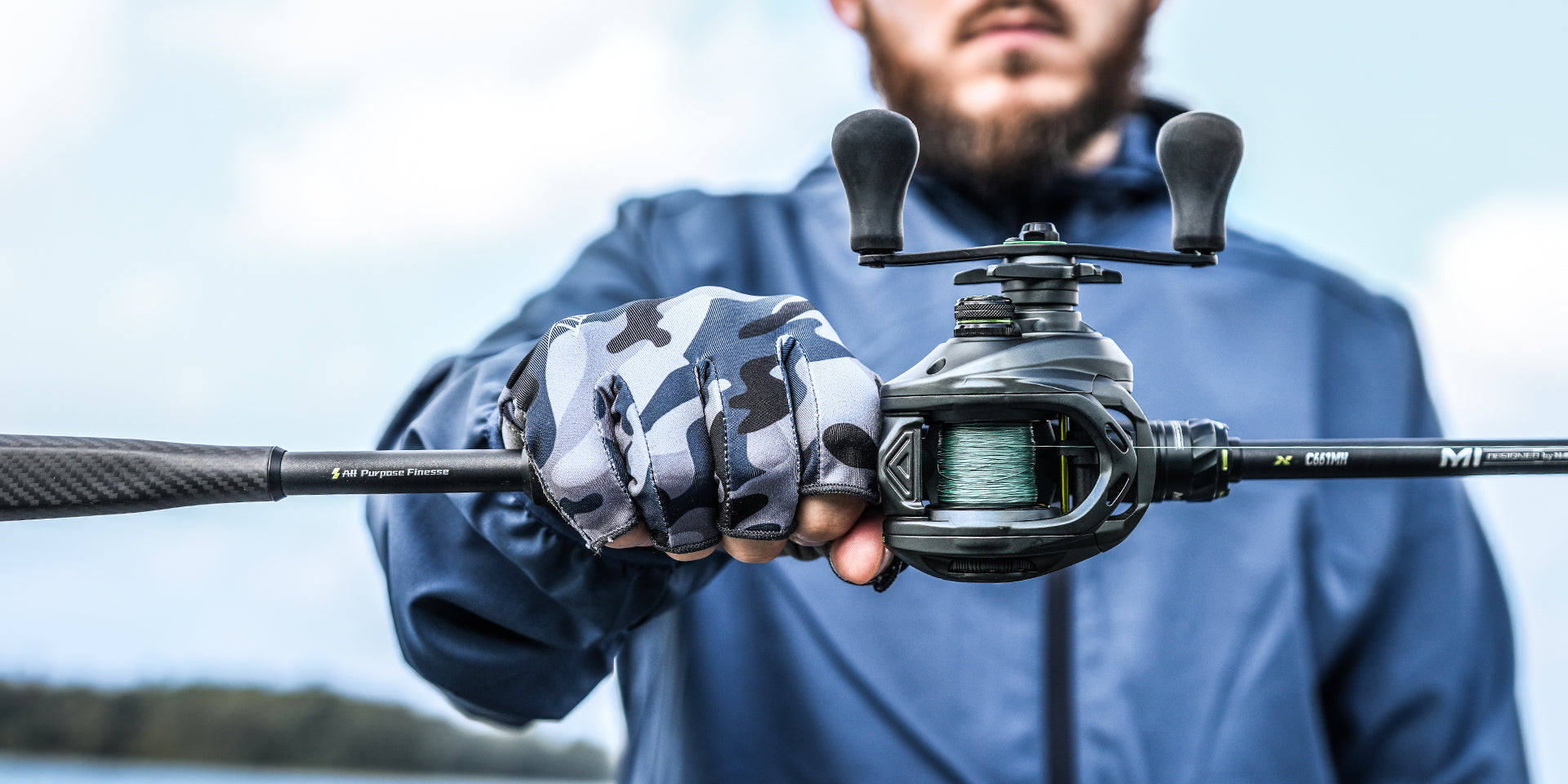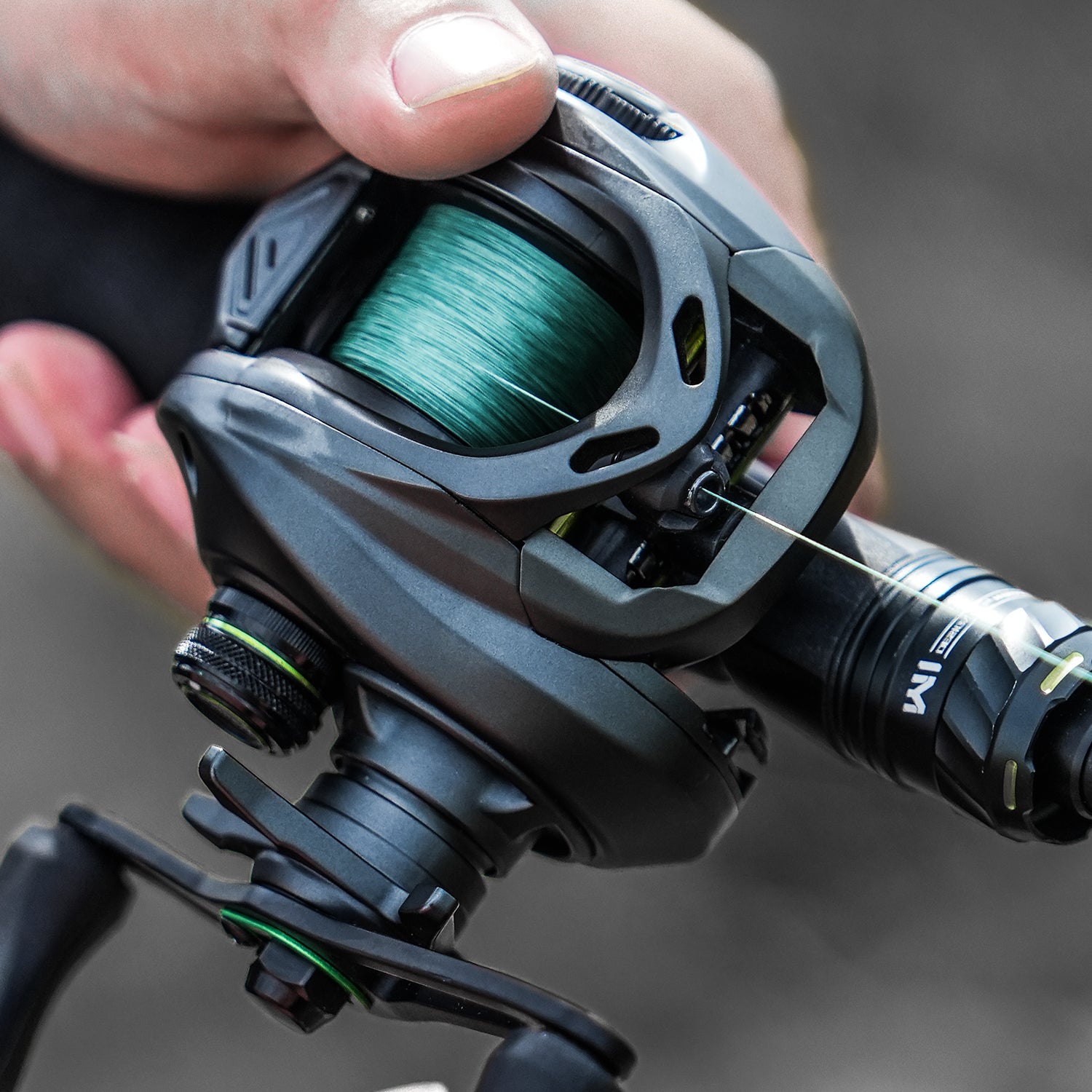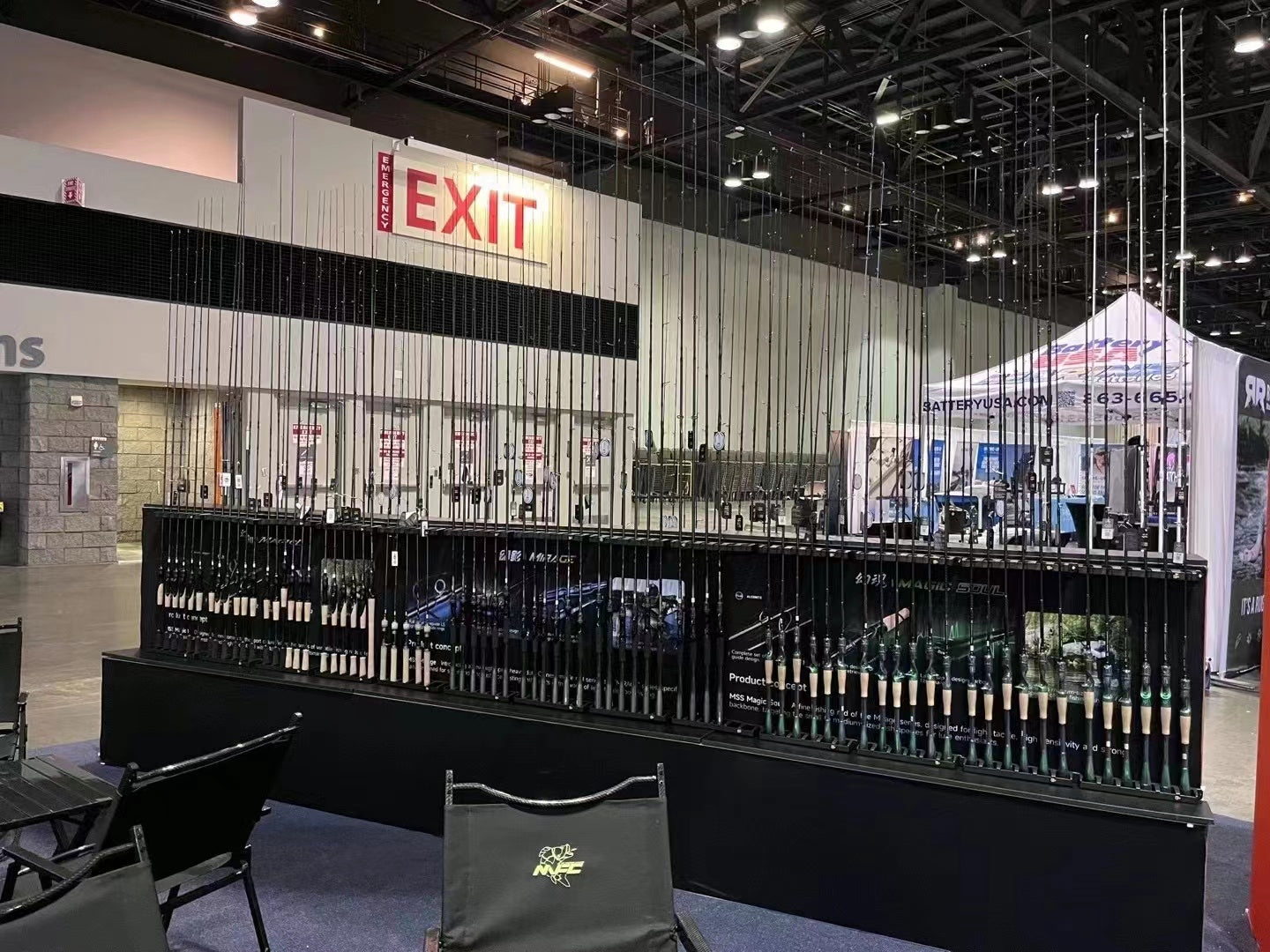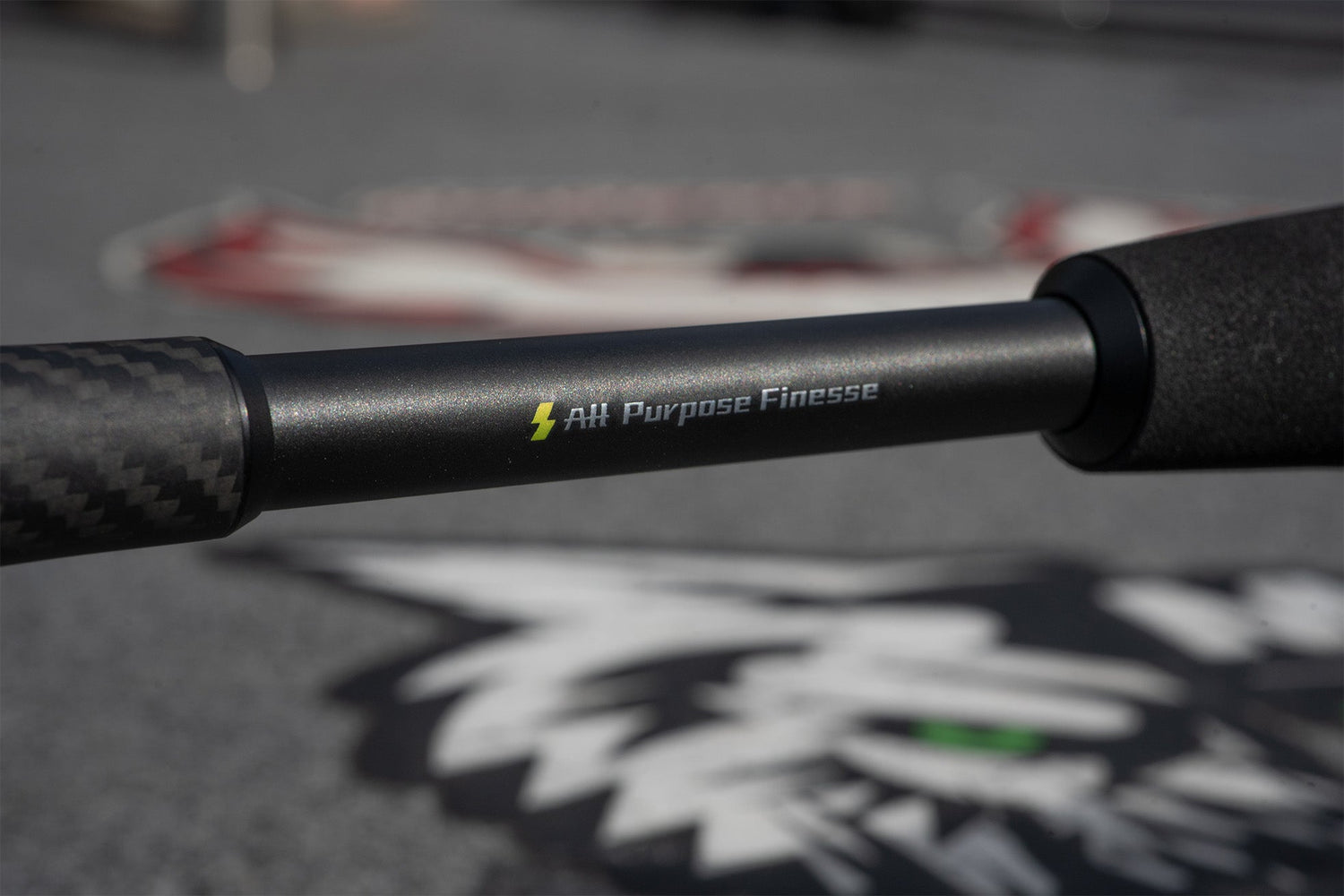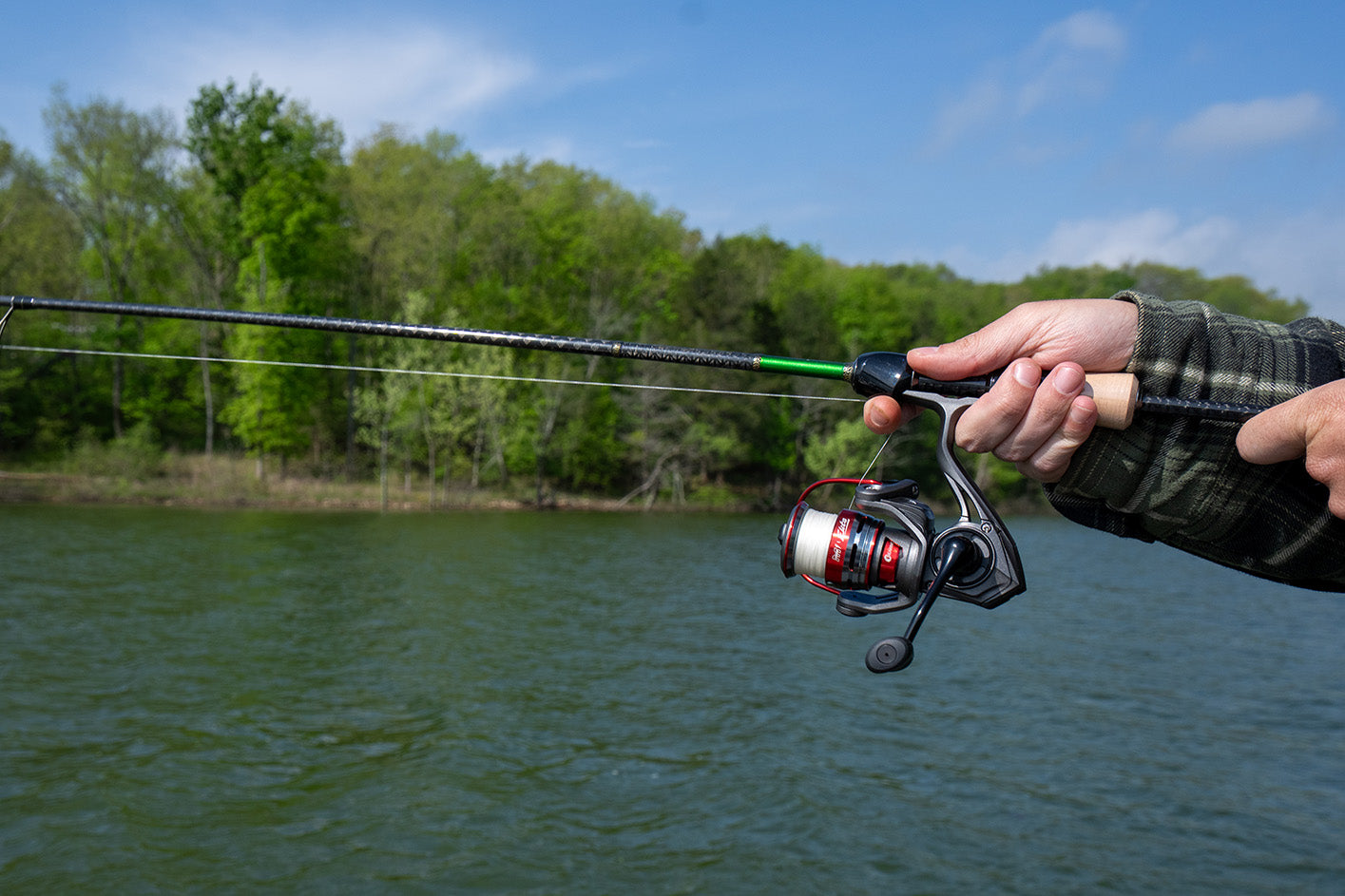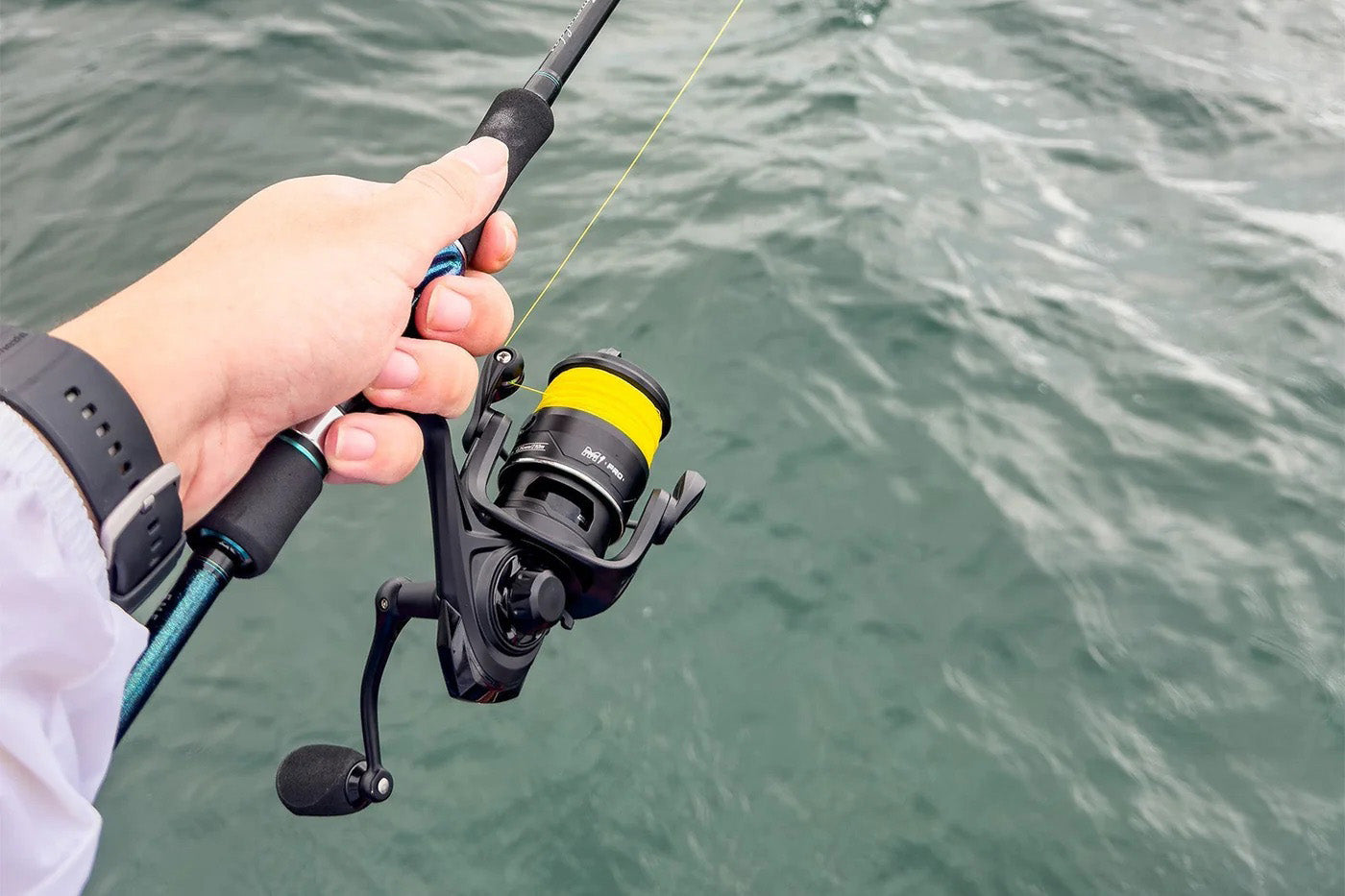Walking into a fishing store and seeing all the different rods can be overwhelming. How do you choose the right one? The material a rod is made from makes a big difference in how it performs. It affects everything from how sensitive it is to how long it lasts. We'll look at the different materials used to make fishing rods today, so you can pick the one that's right for how you fish.
3 Key Fishing Rod Characteristics: What You Need to Know
Before diving into rod materials, let's get familiar with some essential fishing rod terminology that will help you make sense of what really matters when choosing a rod.
1. Power: The Backbone of Your Rod
Rod power refers to how much force is needed to bend a rod. Think of it as the rod's lifting strength. Power ranges from ultra-light to extra-heavy, with several gradations in between.
An ultra-light rod bends easily and is perfect for small fish like panfish or trout using light lures.
Matching your rod's power to your target fish size and lure weight is crucial. Using too light a rod for big fish risks breaking it, while an overpowered rod for small fish reduces the fun and may tear hooks from softer mouths.

2. Action: Where and How Your Rod Bends
Rod action describes where the rod bends when pressure is applied. This characteristic affects how you'll feel bites and set hooks.
Fast action rods bend mostly near the tip, keeping the lower section stiff. These rods excel at sensitivity and quick hook sets, making them ideal for techniques like jigging where detecting subtle bites is paramount.
Moderate action rods bend through the upper half of the blank. They provide a nice balance between sensitivity and forgiveness, working well with a crankbait and other moving lures where you need some give to prevent pulling hooks..
Slow action rods bend throughout most of their length, right down to the handle in extreme cases. They load and unload more gradually, making them forgiving for beginners and excellent for throwing light lures with light line.
3. Sensitivity: Feeling Every Nibble
A rod's sensitivity determines how well you can feel what's happening at the business end of your line. Greater sensitivity lets you detect light bites and feel bottom structure more effectively, often making the difference between coming home with fish or just a story about the one that got away.
3 Common Fishing Rod Materials
Now that we've covered the fundamental characteristics, let's examine the materials that determine those characteristics and how they perform on the water. Quality fishing rods made from different materials can dramatically affect your fishing success.
1. Fiberglass: The Traditional Option
Fiberglass rods have been around since the 1940s and still have a place in specific fishing applications today. These rods are constructed from glass fibers embedded in resin, creating a flexible and durable blank.
Strengths of Fiberglass:
- Good shock absorption helps keep hooks in fish during jumps and hard runs
- Often available at lower price points for budget-conscious anglers
- Parabolic flex pattern suits certain fishing techniques
- Predictable action under load
Fiberglass does have its drawbacks. These rods tend to be heavier than their carbon fiber counterparts, potentially causing arm fatigue during long fishing sessions. They also lack the sensitivity of carbon fiber, making it harder to detect subtle bites or feel bottom structure.
Today, fiberglass is mostly used for very specific applications like throwing crankbaits or other moving baits where the softer, more parabolic action helps prevent hooks from pulling free during the fight. For most general fishing applications, however, modern carbon fiber has largely surpassed fiberglass in performance and value.
2. Carbon fiber: The Modern Standard
Since its introduction to fishing in the 1970s, carbon fiber (often called graphite) has revolutionized rod design. Carbon fiber rods are created from carbon fibers bound with resin, then heated and pressed into rod blanks.
Carbon fiber comes in different modulus ratings—a measure of stiffness relative to weight. Higher modulus carbon fiber creates stiffer, lighter rods, but typically at a higher price point and with increased brittleness.
Advantages of Carbon Fiber:
- Exceptional sensitivity transmits the faintest bites to your hand
- Significantly lighter weight reduces fatigue during long days
- Superior strength-to-weight ratio provides power without bulk
- Fast actions facilitate precise casting and quick hook sets
- Modern manufacturing has greatly improved durability
While early carbon fiber rods were indeed brittle, technological advances have dramatically improved their durability. Today's carbon fiber rods can withstand significant stress while maintaining their performance characteristics, making them suitable even for beginners.
If you fish techniques requiring sensitivity—like drop shotting, jigging, or fishing soft plastics—carbon fiber's ability to transmit vibrations makes it the material of choice. For both beginners and experienced anglers, today's carbon fiber rods deliver unmatched feel, response, and overall performance.
3. Composite: Specialized Performance
Composite rods blend fiberglass and carbon fiber to create versatile tools that capitalize on the strengths of both materials. By carefully controlling the mixture and placement of materials, rod designers can create blanks with specific performance characteristics.The sophisticated fishing rod composition allows manufacturers to fine-tune every aspect of the rod's performance.
Why Choose Composite:
- Balanced performance offers good sensitivity with forgiving action
- Versatility handles multiple techniques and conditions
- Strategic reinforcement provides durability where it's needed most
- Customizable design allows manufacturers to target specific actions
The primary disadvantage of composite rods is that they may not excel in specialized applications the way pure carbon fiber or fiberglass rods might. They're also rarely found at the budget end of the price spectrum, as their complex construction requires more sophisticated manufacturing processes.
Composite rods now occupy a specialized niche for particular techniques, rather than serving as a "best of both worlds" option as they once did.
Matching Materials to Your Fishing Style
No single rod material is objectively "best" for everyone. The right choice depends on your specific needs and fishing conditions.

For Beginners: Durability Meets Forgiveness
For those new to fishing, today's carbon fiber rods offer significant advantages over traditional fiberglass. The enhanced sensitivity of carbon fiber helps beginners feel bites they might otherwise miss, accelerating the learning curve and increasing success rates. Selecting the right rod material is just one of many important factors beginners should consider when purchasing their first fishing rod.
Modern carbon fiber rods provide the perfect balance of performance and user-friendliness. Their lightweight design prevents fatigue during the learning process, while their responsive nature helps novices develop a feel for proper technique.
For Lure Anglers: Sensitivity Is King
Those who fish primarily with artificial lures need rods that transmit information about lure action and strikes. Here, carbon fiber or high-carbon-fiber-content composite rods shine.
When fishing soft plastics, jigs, or other lures where bite detection is crucial, choose rods with higher carbon fiber content. For crankbaits or other moving baits that benefit from some give during the retrieve, composite or even fiberglass rods can provide the perfect action to maximize hook-ups and minimize lost fish.
For Different Fishing Environments
Environmental factors also influence the ideal rod material. In cluttered areas with overhanging trees or brush, shorter, more durable rods make sense. For open water where long casts are necessary, longer carbon fiber rods offer casting distance without excessive weight.
Saltwater anglers face additional considerations. The corrosive nature of salt demands corrosion-resistant components and materials that can stand up to larger, stronger fish. A purpose-built saltwater casting rod features corrosion-resistant guides and components specifically designed to withstand the harsh marine environment while maintaining the backbone needed for powerful gamefish.

Pick the Right Fishing Rod Material!
In today's fishing world, carbon fiber rods have become the standard for most applications, offering an unbeatable combination of sensitivity, strength, and light weight. While fiberglass still has niche applications and composite rods serve specialized needs, carbon fiber is the clear choice for anglers of all experience levels. Think about what's most important to you: Do you want to feel every little bite? Do you need a rod that can handle a lot of wear and tear? Or do you want something that works well for different fishing methods? Then choose the material that fits your needs. The perfect rod is out there!


